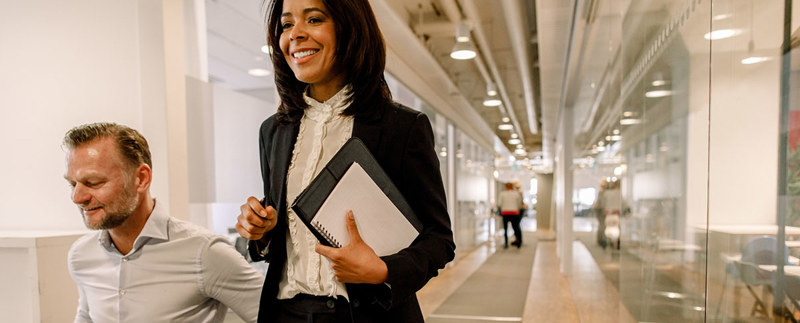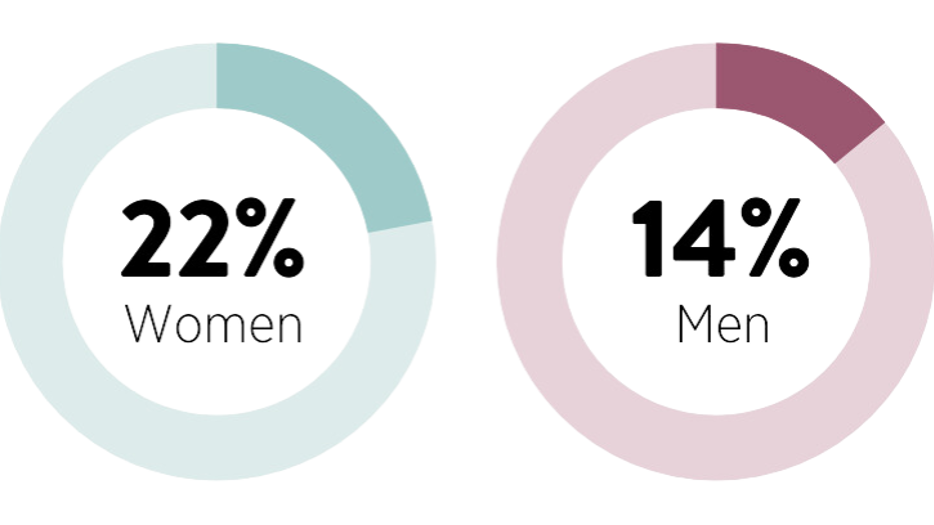Sub-goal 1: Even distribution of power and influence
The higher up in the hierarchy, the more men hold the majority of positions within most sectors of society. Business, higher education and organisations with less transparency have few women in senior positions. However, some progress towards gender equality has been made in politics and public administration over the past 25 years.

On the path to gender equal representation
Following the 2022 election, the Swedish Parliament consists of 46 percent women, the same as after the 2018 election. The goal of achieving a 50-50 balance has largely been reached in state administration and within the Government Offices, which can be attributed to the clear gender equality objectives set by the government and their use of power of appointment.
However, progress remains stagnant at the regional and municipal political levels in several respects. The representation of women in municipal councils has hovered around 40 percent for several years, while municipal executive boards are still dominated by men. Most municipal and regional executive boards are also chaired by men, but women hold elected positions to a greater extent where direct elections are held and transparency is high.
Young people are generally underrepresented in municipal politics today; they tend to leave it more often, and among those who drop out, younger women are overrepresented.
Women in politics more vulnerable than men
The sub-goal of achieving an equal distribution of power and influence is not just about counting heads. It is also crucial that women and men have the same rights and opportunities to be active citizens and shape the conditions for decision-making across all sectors of society.
Harassment, hate speech, and threats against politicians are a serious and growing problem in Sweden. Most commonly, such harassment occurs on social media platforms.
Vulnerability varies between women and men. Young women, women in high-profile positions with high visibility, and women from ethnic minority backgrounds are particularly affected. The harassment directed at women often takes on a different character than that directed at men.

Women receive more personal attacks related to their gender, sexuality, and appearance, questioning their intellectual capacity and competence as politicians. Men are usually attacked for their policies. Individuals advocating certain issues, such as gender equality and men's violence against women, are also particularly vulnerable.
Studies show that young women are more likely to withdraw from political duties and public debate arenas after experiencing harassment and abuse. Threats, hate speech, and harassment against politicians tend to disproportionately affect already underrepresented groups.
Women and men hold different attitudes towards gender equality
There is an increased ideological difference and greater disparity in attitudes towards gender equality between young men and young women. When it comes to attitudes towards gender equality, young men stand out. They are more likely than women to believe that society is already equal and that women exaggerate inequality. Young men also distance themselves the least from the notion that men make better political leaders and managers than women.
More men in leadership positions in higher education and business
In private companies, academia, and organisations, male dominance in leadership positions is prevalent. There are few women in the leadership roles of large publicly traded companies. Nine out of ten chairpersons and CEOs in these companies are men. Men are also overrepresented as managers in industries traditionally perceived as male-dominated.
In universities and colleges, conditions differ for women and men concerning employment, career paths, and access to research funding. Women are also underrepresented in high academic power positions; for example, only three out of ten professors are women.
What challenges exist for gender equality in power and influence?
The Swedish Gender Equality Agency highlights several areas for development to achieve an equal distribution of power and influence:
-
The part of the goal concerning an equal distribution needs to be specified. Within the state administration and state-owned companies, the government has set clear goals regarding the proportion of women and men in decision-making positions and timeframes for when the goals should be achieved – which has yielded results.
-
Other political measures are also required to achieve the goal.
-
Young people are an important target group for gender equality policy. This applies to both differences in young women's and men's attitudes towards gender equality issues and young women's vulnerability and dropout rates in politics.
Learn mor about power and influence
European and international reports:
- Gender mainstreaming in the European Commission, SIEPS
- Quotas can turbocharge progress on gender balance in politics and business, EIGE
- COVID-19 and women’s leadership: From an effective response to building back better, UN Women, Europe and Central Asia
- Women’s representation in local government: A global analysis, UN Women
Publication date: 7 January 2022
Last updated: 4 July 2025
